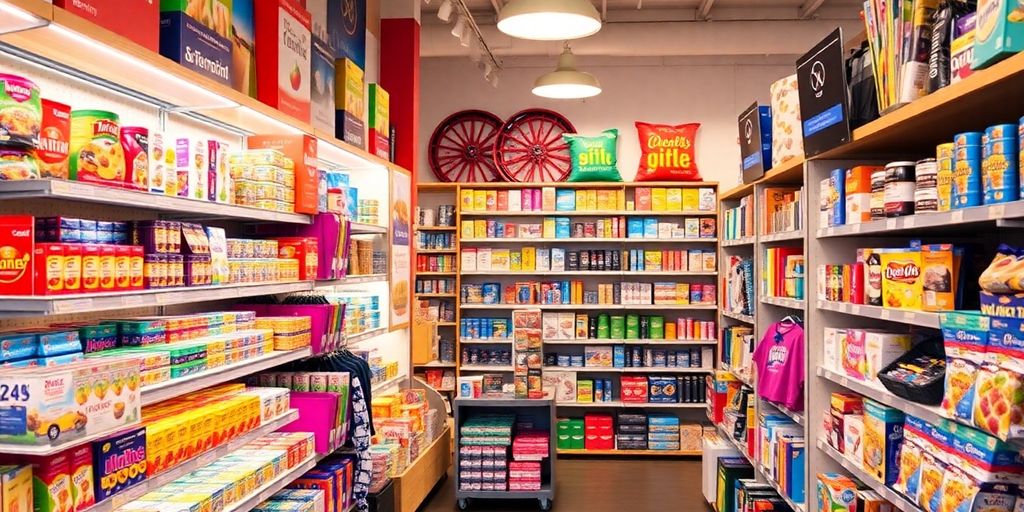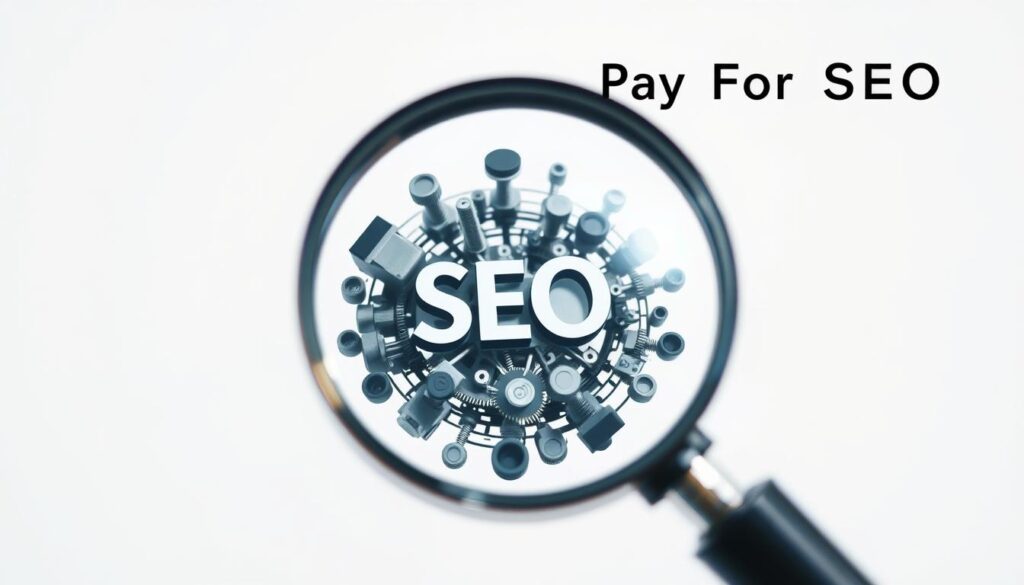Ever wondered how retail stores get noticed online? That’s where SEO comes in. It’s like a magic trick that helps your store stand out in search engine results, making it easier for people to find you. Whether you run a small boutique or a big chain, understanding and using SEO can really boost your online presence. Let’s explore what SEO for retail stores is all about and why it’s so important.
Key Takeaways
- SEO helps retail stores appear higher in search results, increasing visibility.
- Keywords play a crucial role in attracting the right audience to your store.
- Local SEO tactics can drive more foot traffic to physical store locations.
- Optimizing product pages can lead to higher conversion rates.
- Avoiding common SEO mistakes can save time and improve results.
Understanding Retail SEO

Defining Retail SEO
Retail SEO is all about making your store visible to folks searching online. Think of it as a way to help your shop pop up when someone types something into Google. It’s like setting up a signpost on the internet highway that says, "Hey, we’re here, come check us out!" This digital strategy is crucial for both online and brick-and-mortar stores aiming to reach more customers. By using the right keywords and improving your site, you make it easier for search engines to find and show your store to potential buyers.
Key Components of Retail SEO
Retail SEO isn’t just one thing; it’s a mix of several elements working together. Here’s what you need to focus on:
- Keywords: These are the words people type into search engines. You want to use words that match what your customers are looking for.
- On-page SEO: This involves optimizing your product pages and content. It’s about making sure your site is easy to navigate and relevant to search queries.
- Technical SEO: This is the behind-the-scenes stuff like site speed and mobile-friendliness. If your site loads slowly or doesn’t work well on phones, people will leave fast.
The Role of Keywords in Retail SEO
Keywords are the heart of SEO. They connect your store to potential customers. You need to think about what words your customers use when they want something you sell. For instance, if you run a shoe store, "comfortable running shoes" might be a keyword to focus on. It’s important to choose the right words because they help search engines understand what your site is about. Effective retail SEO involves thorough keyword research, customized web design, and strategic brand positioning to enhance online visibility and attract customers. Learn more about effective retail SEO strategies.
Retail SEO isn’t just about getting more clicks; it’s about connecting with the right audience. By understanding what your customers are searching for, you can tailor your site to meet their needs and improve your business’s online presence.
Importance of SEO for Retail Stores
Enhancing Online Visibility
For retail stores, being visible online is everything. Think about it: most people start their shopping journey online. SEO helps your store show up when people search for products you sell. It’s like having a big sign on the internet highway. The higher your store ranks in search results, the more likely people will notice you. And more visibility means more potential customers checking out what you’ve got.
Driving Traffic to Your Store
Getting people to visit your online store is a big deal. If no one sees your stuff, how will they buy it? SEO is all about making sure your store pops up when someone searches for something you sell. When done right, it can drive a ton of traffic to your site. More visitors mean more chances to make a sale. Plus, with the right local SEO tactics, you can even boost foot traffic to your physical store.
Increasing Conversion Rates
Once you’ve got people visiting your site, the next step is turning those visits into sales. That’s where conversion rates come in. SEO doesn’t just bring people to your store; it brings the right people. By targeting the right keywords, you attract folks who are more likely to buy what you’re selling. And when your site is easy to use and fast, those visitors are more likely to become customers. So, SEO isn’t just about getting people to your site—it’s about making sure they stick around and make a purchase.
In the retail world, SEO is like the secret sauce that makes everything work better. It helps you get noticed, brings people to your store, and turns those visits into sales. Without it, you’re just another store lost in the crowd.
Effective Strategies for Retail SEO
Keyword Research Techniques
Starting with the right keywords is like laying the foundation for a solid SEO strategy. Dive into the world of keyword research by first understanding what your audience is searching for. Think about the specific phrases they might use, especially those long-tail keywords. These are longer, more specific phrases that often have less competition and can attract more targeted traffic. For example, instead of just "shoes," you might target "comfortable running shoes for women." This focus can significantly improve your reach. Keep an eye on what your competitors are doing too; it might reveal gaps in your strategy.
Optimizing Product Pages
When it comes to product pages, every detail counts. Make sure your product descriptions are unique and engaging, avoiding the temptation to just copy from manufacturers. Use clear, high-quality images and consider adding customer reviews to build trust. Don’t forget to optimize your meta tags, titles, and URLs with relevant keywords. A well-structured page not only helps SEO but also enhances user experience.
- Use descriptive titles and headers
- Incorporate keywords naturally
- Ensure fast loading times
Improving User Experience
User experience is a big deal for SEO. If visitors find your site easy to navigate, they’re more likely to stick around. A seamless user experience can reduce bounce rates and increase conversions. Here are a few tips:
- Make sure your site is mobile-friendly, as more people shop on their phones
- Improve page load speeds; no one likes waiting
- Simplify navigation with clear categories and search functions
In the world of retail SEO, focusing on the user is just as important as focusing on the search engines. Prioritize what makes the shopping experience enjoyable and straightforward.
By implementing these strategies, retail stores can not only boost their search engine rankings but also create a better shopping experience for their customers. This, in turn, can lead to higher sales and customer satisfaction.
Local SEO Tactics for Retailers
Creating Localized Content
Retailers can really stand out by crafting content that speaks directly to their local audience. Think about writing blog posts that highlight local events, or creating guides that showcase neighborhood attractions. This not only helps in building connections with the community but also boosts your store’s visibility in local search results. Localized content can be a game-changer for attracting nearby customers.
Utilizing Google My Business
Setting up and optimizing your Google My Business profile is essential for any retail store. Make sure all your business information is accurate and up-to-date. Add photos of your store, list your business hours, and encourage satisfied customers to leave reviews. This not only improves your online presence but also helps potential customers find you easily.
Building Local Backlinks
Getting backlinks from other local businesses or community websites can significantly improve your local SEO. Consider partnering with local blogs, sponsoring community events, or collaborating with nearby businesses to create mutual backlinks. These efforts not only enhance your search engine ranking but also strengthen your ties within the community.
Engaging with the local community through content and partnerships can transform your retail store’s online visibility. It’s about creating genuine connections that resonate both online and offline.
Measuring SEO Success in Retail

Tracking Key Performance Indicators
When it comes to measuring SEO success for retail stores, tracking key performance indicators (KPIs) is crucial. KPIs provide a clear picture of how well your SEO strategies are performing. Some important KPIs to monitor include organic traffic, bounce rate, and conversion rate. Organic traffic shows the number of visitors coming to your site through search engines without paid ads. A high bounce rate might indicate that visitors aren’t finding what they need, suggesting a need for content or user experience improvements. Conversion rate, on the other hand, tells you how many visitors are completing desired actions, like making a purchase.
Analyzing Traffic Sources
Understanding where your traffic comes from is essential for refining your SEO strategy. Use tools like Google Analytics to break down your traffic sources into categories such as organic search, direct traffic, referral traffic, and social media. This analysis helps you identify which channels are driving the most visitors and which ones need more attention. For instance, if your organic search traffic is low, it might be time to revisit your keyword strategy or optimize your product pages.
Adjusting Strategies Based on Data
SEO isn’t a set-it-and-forget-it task. It’s an ongoing process that requires regular adjustments based on data analysis. Look at your KPIs and traffic sources to identify trends and areas for improvement. If a particular keyword isn’t driving traffic, consider replacing it with a more effective one. Similarly, if a specific page has a high bounce rate, review its content and layout to make it more engaging. By continuously refining your approach, you can ensure that your retail store remains competitive in the ever-changing digital landscape.
SEO for retail stores is not just about attracting visitors but converting them into loyal customers. Regularly analyzing your SEO data helps you stay ahead of the competition and meet your business goals.
For small businesses, enhancing their online visibility through effective SEO strategies is key. Regular monitoring of metrics like organic traffic, bounce rate, and conversion rate is essential for understanding success and making necessary adjustments. It’s a continuous effort to adapt to search engine changes and market trends.
Common SEO Mistakes to Avoid
Neglecting Mobile Optimization
In today’s fast-paced world, more people are browsing on their phones than ever before. If your site isn’t mobile-friendly, you’re missing out on a huge chunk of traffic. Mobile optimization is not just a nice-to-have; it’s essential. A mobile-friendly website can boost your visibility and even help with backlinks, as people are more likely to share content they can easily access on their phones.
- Ensure your site design is responsive.
- Test your site’s mobile loading speed.
- Avoid using Flash, as it’s not supported on many mobile devices.
Ignoring Page Speed
Page speed can make or break your user experience. If your site takes too long to load, visitors might just bounce off and head to a competitor. You don’t want that! Think about it: a site that loads in one second can have conversion rates 2.5 times higher than one that takes five seconds.
- Compress images to reduce load times.
- Use browser caching.
- Minimize JavaScript and CSS files.
Overlooking Content Quality
Content is king, right? But only if it’s done right. Overlooking the quality of your content can lead to poor engagement and lower rankings. Search engines love fresh, relevant content. Make sure your content answers the questions your audience is asking.
- Avoid duplicate content.
- Update old content regularly.
- Focus on creating valuable, informative pieces.
Skipping these fundamental SEO practices can lead to missed opportunities and lower rankings. Keep these points in mind to maintain a competitive edge in the digital landscape.
For more insights into avoiding these pitfalls, check out our common SEO mistakes guide.
Future Trends in Retail SEO
Voice Search Optimization
Voice search is becoming a big deal, especially with all the smart speakers and voice assistants popping up everywhere. People are talking to their devices more than ever, asking for everything from the weather to where they can buy the best sneakers. Optimizing for voice search means thinking about how people speak, not just how they type. This means focusing on natural language and questions. For example, instead of just targeting "sneakers," you might want to include phrases like "where can I buy comfortable sneakers near me?". Lists and FAQs can be super helpful here, too.
AI and Machine Learning in SEO
AI isn’t just for sci-fi movies anymore. It’s changing how we do SEO. By 2025, SEO professionals are expected to leverage AI tools for automating tasks such as SERP analysis, keyword research, and content optimization, enhancing efficiency and effectiveness in their strategies. Machine learning algorithms can analyze tons of data faster than any human, spotting trends and patterns that can give retailers an edge. This tech helps in creating more personalized and relevant content for users, which search engines love.
The Rise of Visual Search
Visual search is another trend that’s gaining traction. Instead of typing out a search, people can now just snap a picture of what they’re looking for. This is huge for retail, especially fashion and home decor. Retailers need to make sure their images are optimized for search engines. That means using high-quality images, adding alt text, and making sure your site loads quickly. As visual search tech gets better, it’s going to become a key part of how people shop online.
As the digital landscape shifts, staying ahead of these trends can be the difference between thriving and just surviving in the retail world. Embracing these changes isn’t just smart—it’s necessary for future success.
Conclusion
So, there you have it. SEO for retail stores is like your secret weapon in the digital world. It’s not just about getting your store noticed; it’s about making sure the right people find you at the right time. By focusing on the right keywords, optimizing your product pages, and keeping an eye on your site’s performance, you can really make a difference. It’s not a one-time thing, though. SEO is more like a marathon than a sprint. Keep tweaking and improving, and you’ll see the benefits in the long run. And hey, if it all feels a bit much, there are pros out there who can help you out. Just remember, every little bit helps in getting your store to shine online.
Frequently Asked Questions
What is SEO for retail stores?
SEO for retail stores is a way to make your store’s website show up higher in search results. This helps more people find your store online.
Why is SEO important for retail businesses?
SEO is important because it helps your store appear in search results, bringing more visitors to your website. This can lead to more sales and customers.
How do keywords help in retail SEO?
Keywords are words or phrases that people type into search engines. By using the right keywords, your store can show up when people search for products you sell.
What are some common mistakes in retail SEO?
Some common mistakes include not making your website mobile-friendly, ignoring how fast your pages load, and not focusing on good content.
How can I measure the success of my retail SEO efforts?
You can track how many people visit your site, where they come from, and what they do on your site. This helps you see what’s working and what needs improvement.
What future trends should I watch for in retail SEO?
Future trends include optimizing for voice search, using AI to improve SEO, and focusing on visual search, where people search using images.






